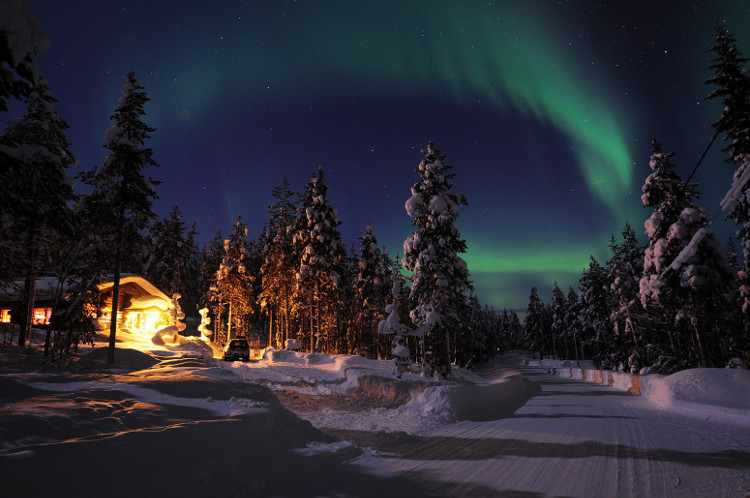Why is there a midnight sun?
Are you a morning lover? Do you feel the daytime is not always enough for you to complete all the activities you want? Do you hate the silence and the darkness of the night? Or are you a night owl that loves the night? Do you often come up with the most ideas at night?
The Earth is always moving in accordance with the law and there is always day and night present every day in our lives. For some people, nighttime can make them feel sad and lonely, while others love time at night and hate the daylight very much.
In fact, on Earth there are places where the Sun does not dive or grow for many days. These phenomena are called Midnight Sun and White Night . So what are these phenomena?
The midnight sun is a natural phenomenon when we can see the Sun at midnight. This phenomenon occurs near the Arctic and Antarctic . Contrary to this phenomenon is called polar night , when there is no sunlight during the day.

Sun phenomenon at midnight.
According to ScienceABC, midnight Sun phenomenon occurs at the Arctic Circle in the summer solstice (around June 22), White Night phenomenon occurs in the winter solstice (around December 21). In the Antarctic ring, the phenomenon of the Sun at midnight occurs in the winter solstice and the phenomenon of White Night occurs in the summer solstice.

White Night phenomenon.
In the Arctic Circle, midnight Sun phenomenon can be seen in Norway, Finland, Iceland, Sweden and Canada . In the Antarctic, this phenomenon is only visible In Antarctica , where people do not live mainly, there are only a small number of researchers. In fact, in places close to the two poles, the Sun did not dive within half a year corresponding to the hot season and did not grow within half a year corresponding to the cold season.

In the Antarctic, this phenomenon is only visible in Antarctica.
For every 24 hours the Earth completes a rotation around the axis, this is the reason for the change between day and night. In addition, the Earth also orbits the Sun and completes one round after 365 days (one year). The axis perpendicular to the Earth's orbit plane is tilted at an angle of 23.5 degrees. If the Earth is upright, there will be 12 hours a day and 12 hours a night every day on Earth throughout the year. But the fact that the Earth is tilted so that in the Arctic Circle, the Sun does not set during the summer solstice and at the North Pole, the Sun does not set for 6 months. Similarly, in the Antarctic, the Sun does not set during the winter solstice and at the South Pole, the Sun does not set for 6 months.
Can you imagine life in the area that the Sun did not dive in the next 6 months and 6 months is a dense night?
- The strange land where the Sun rises at midnight
- Video: Amazing beauty when the Sun sets at midnight in Iceland
- At midnight there is also the Sun.
- Mysterious ants 'click' midnight bell
- Babies born at midnight are at risk for brain problems
- Vietnam can admire the half-moon eclipse on the morning of September 17
- Why do newspapers move food to trees?
- Spain: ban smoking in public places
- Stay healthy World Cup season
- Decode nocturnal syndrome
- Why is Pizza so popular in America?
- Snakes have legs in China
 'Fine laughs' - Scary and painful torture in ancient times
'Fine laughs' - Scary and painful torture in ancient times The sequence of numbers 142857 of the Egyptian pyramids is known as the strangest number in the world - Why?
The sequence of numbers 142857 of the Egyptian pyramids is known as the strangest number in the world - Why? History of the iron
History of the iron What is alum?
What is alum?